Job: Research Analyst – UCLA Anderson School of Business (Los Angeles, CA)
Posted by Sydney Sparrow. Click here to join the JETwit Jobs Google Group and receive job listings even sooner by email
Position: Research Analyst – Bilingual Japanese/English
Posted by: UCLA Anderson School of Business
Location: Lost Angeles, CA
Contract: Full-Time
JQ Magazine: Book Review — ‘The Japanese Sake Bible’
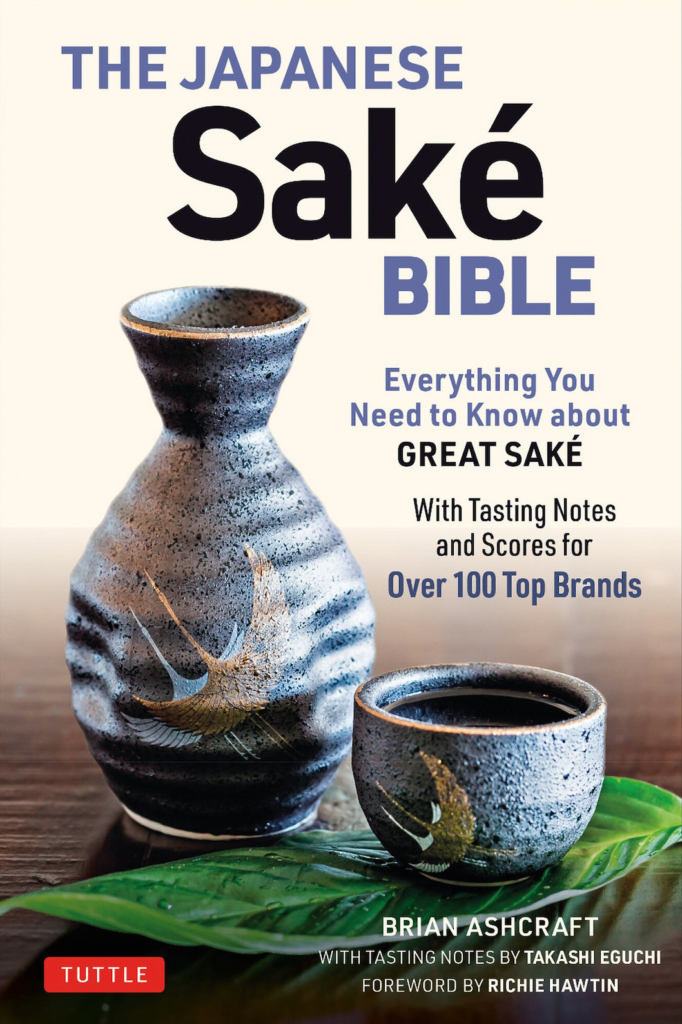
By Rashaad Jorden (Yamagata–ken, 2008-10; Kochi-ken, 2018-2020) for JQ magazine. A former head of JETAA Philadelphia’s Sub–Chapter, Rashaad is a graduate of Leeds Beckett University with a master’s degree in responsible tourism management. For more on his life abroad and enthusiasm for taiko drumming, visit his blog at www.gettingpounded.wordpress.com.
Maybe it’s a bit too strong for your liking. Or maybe it contributed to an unpleasant hangover. But it’s quite possible it was a part of your JET experience.
I’m talking about sake. Anyone curious about what they might have been sipping at an enkai would do well to pick up The Japanese Sake Bible. Compiled by Kotaku Senior Contributing Editor Brian Ashcraft, this comprehensive work examines the world of sake—most notably its origins, its rise to becoming “Japan’s National bBeverage” (coincidentally the title of the first chapter), and tips on how to make the drink yourself.
True to its name, Ashcraft creates a book heavy on history. It’s clear upon looking at the first page of the aforementioned first chapter that this Bible will be more or less Sake 101 (oddly enough, the origins of sake were addressed not at the beginning of the book, but in chapter five). Although the author presents a lot of facts that will probably go over readers’ heads, he excels at thoroughly explaining in detail topics like the definition of sake, which is legally defined as being filtered from fermented rice, koji and water, and the differences between sake, wine and beer.
Although the book is in large part an introduction to the drink, it also serves as a guide for aspiring, if not full-fledged, sake connoisseurs. Ashcraft (also the author of Japanese Whisky) presents to readers more categories of sake than one might have thought actually existed: there’s well-polished sake, sparkling sake, and raw and unprocessed sake. Also, niche sake that might not be easy to find.
Read MoreWIT Life #347: Japan events
Interpreter/Translator/Writer Stacy Smith (Kumamoto-ken CIR, 2000-03) presents WIT Life, a periodic series about aspects of Japanese culture such as art, film, food and language. Stacy starts her day by watching Fujisankei’s newscast in Japanese, and here she offers some interesting tidbits and trends along with her own observations.
As we get deeper into fall, I hope everyone has been enjoying the cooler temps, かぼちゃ (kabocha or pumpkin), and 紅葉 (kouyou or autumn foliage). I went hiking upstate two weeks ago and the leaves were just starting to turn pretty colors, so I’m hoping when I go again this weekend they will be in their full glory.

In sad news, last Sunday’s Times featured a story on the horrific attack on Japanese pianist Tadataka Unno. I first heard about what happened on the Japanese news, and since then many publications have covered it. A groundswell of support followed this tragedy, and a GoFundMe campaign to help Unno and his family has since raised more than $255,000.
Finally, there are couple of great webinars coming up for all you Japanophiles. Tonight at 8 pm Columbia’s Center on Japanese Business and Economy will discuss the transition from Abenomics to Suganomics. Tomorrow at 6 pm Japan Foundation will sponsor a Q&A with Stephen Snyder, known for translating The Memory Police by Yoko Ogawa (excellent read!), nominated for this year’s International Booker Prize. For all the Noh fans out there, Noh Society will be continuing its monthly webinar series this Saturday at 8 pm with a session focusing on the play Izutsu, based on the classic literary work The Tales of Ise. In addition, the 21st Century Japan Politics and Society Initiative at Indiana University has a bunch of interesting events coming up. You can directly sign up for next month’s webinar, but for next year’s events you have to sign up to the mailing list to receive further information. Happy viewing!
Read MoreJapan Insights—Miyazawa Kenji’s footsteps in Iwate prefecture
*********By Makoto Shirai, secretary, Japan-Insights Research Institute (Non-profit organization in Tokyo)
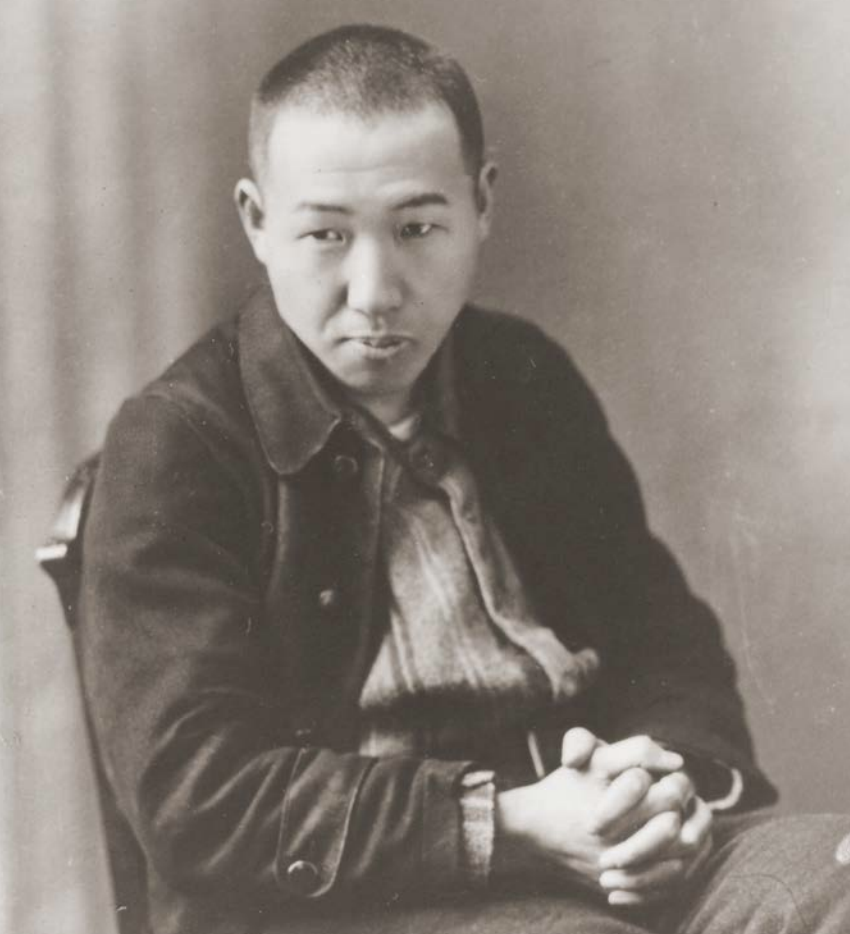
Dear Friends,
Let me introduce an essay from Japan-Insights archives.
Have you visited to northern Japan?
The second one is on Miyazawa Kenji’s footsteps in Iwate prefecture.
https://topics.japan-insights.jp/Public/pdf/japan-insights_jp/topics/JIN_BeingModern.pdf
Please share this expert’s experience!
Japan-Insights is a nonprofit open database.
#japan #japaneseculture #Iwate
Job: Office Assistant – Consulate General of Japan Honolulu (Honolulu, HI)
Posted by Sydney Sparrow. Click here to join the JETwit Jobs Google Group and receive job listings even sooner by email
Position: Office Assistant
Posted by: Consulate General of Japan Honolulu
Location: Honolulu, HI
Contract: Full-Time
Thanks to a JET alum who works at the Consulate General of Japan in Honolulu for passing along the following opportunity:
Location: Consulate General of Japan in Honolulu
1742 Nuuanu Avenue, Honolulu, HI 96817
Number of positions: 1
The Consulate General of Japan has one vacancy in the Cultural Affairs & Public Information Section for a full-time office assistant.
Illuminating Japanese Studies: Lecture Series with Former Japan Foundation Fellows—Afterlife: Translation, “The Memory Police,” and Global Japanese Fiction
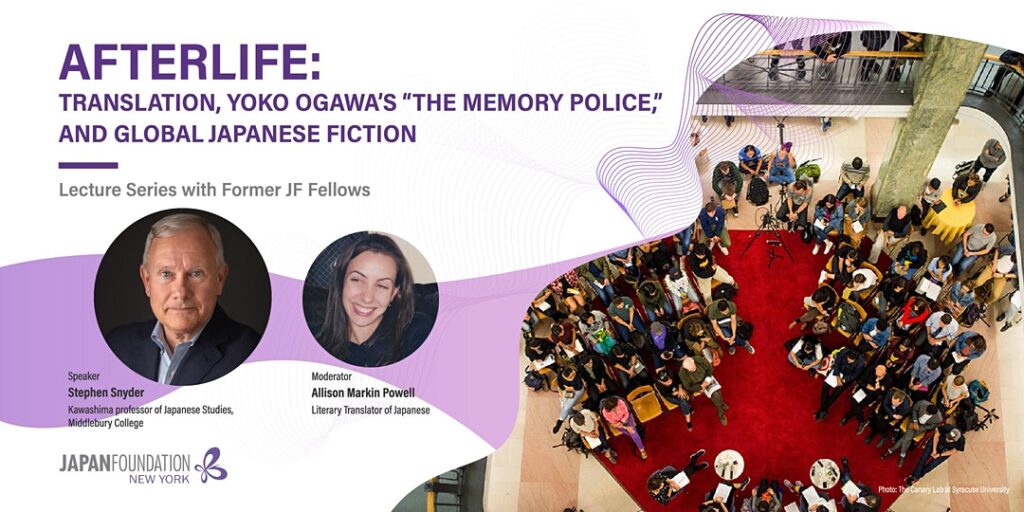
The Japan Foundation, New York is launching an online lecture series “Illuminating Japanese Studies: Lecture Series with Former JF Fellows.”
First up is Afterlife: Translation, Yoko Ogawa’s The Memory Police, and Global Japanese Fiction, with Dr. Stephen Snyder, translator of the recently published, International Booker Prize-nominated, “The Memory Police.” He will discuss the reception of the novel in the English-speaking world, 20 years after the initial publication. The lecture will be on Wed Oct 28 at 6 pm ET and followed by a live Q&A.
The event is free, but please register at the following Eventbrite: https://afterlife-translation-memory-police.eventbrite.com
JETwit’s JET Alum Movers & Shakers: Kat Lovegrove, Ishikawa-ken (2004-2007)
************
JETwit’s JET Alum Movers & Shakers is produced by Ryan Hata (Tottori-ken, 2014-2017), Margie Banin (Kochi-ken, 2005-2007), and Jim Walsh (Fukushima-ken, 2018-2020). Want to be featured next? Submit your information here.

Kat Lovegrove, Ishikawa-ken (2004-2007)
Accomplishment:
Entrepreneur, on the metaphysical side
More Information:
Kat created Ravyn Grove Elemental LLC to craft intention specific tools such as candles, soaps, perfumes, and more people can use in their lives to help them direct and focus their energy on a specific purpose. Kat does it all – from production, design, and marketing; loving the grand adventure that is the creative process. She is also a massage therapist, with a focus on Bowenwork and Pranic Healing.
Public Information:
LinkedIn: www.linkedin.com/in/katlovegrove/
Website: www.RavynGroveElemental.com
Japan Foundation New York Online Pop-Culture Event Session 2
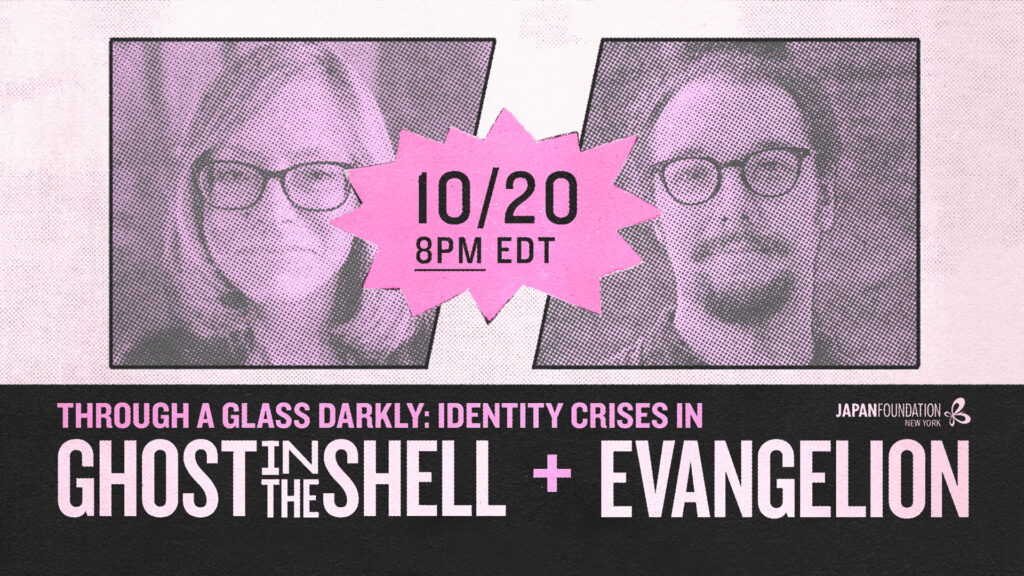
The Japan Foundation, New York launched a monthly online series delving into Japanese pop culture from academic and professional perspectives!
For our second session, we will analyze two of the most iconic animes: Ghost in the Shell and Neon Genesis Evangelion, both of which have been producing new works since their release 25 years ago.
These works are two massive monuments in the anime canon, both emerging as cyberpunk epics in the mid-1990s, each addressing issues of identity and the potential for technological interventions. However, they both manage to do so in different ways and with differently composed subjects. This discussion will address both the interesting similarities, but more compellingly, the particular differences with which Oshii and Anno understood this cyberpunk discourse. Two experts—Dr. Susan Napier and Dr. Stevie Suan—will help us to unravel these complex and fascinating anime works!
The event will be Free, but registration will be required for the event link.
Eventbrite link: https://www.eventbrite.com/e/through-a-glass-darkly-identity-crises-in-ghost-in-the-shell-evangelion-registration-123088824989
Facebook Post: https://www.facebook.com/events/343477666720772/
Twitter Post: https://twitter.com/JF_NewYork/status/1314409962068733953
Japan-Insights—Enchanted Landscapes of Japanese Prehistory: Jamon Sites in Northern Tohoku and Along the Shinano River
*********By Makoto Shirai, secretary, Japan-Insights Research Institute (Non-profit organization in Tokyo)

©APTINET Aomori Prefecture
Dear Friends,
Let me introduce an essay from Japan-Insights archives.
The first one is on the ancient history and archeology of Aomori and Niigata prefectures.
https://topics.japan-insights.jp/Public/pdf/japan-insights_jp/topics/JIN_PrehistoryLandscapes.pdf
Please share this expert’s experience!
Japan-Insights is a nonprofit open database.
#Japan #Japaneseculture #arceology #Aomori #Niigata
JQ Magazine: Book Review — ‘Pure Invention’
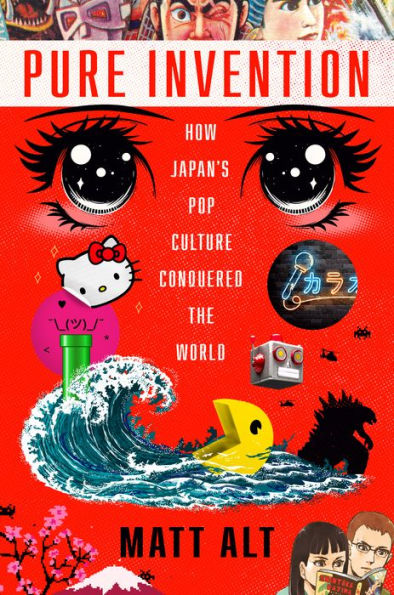
By Rashaad Jorden (Yamagata–ken, 2008-10; Kochi-ken, 2018-2020) for JQ magazine. A former head of JETAA Philadelphia’s Sub–Chapter, Rashaad is a graduate of Leeds Beckett University with a master’s degree in responsible tourism management. For more on his life abroad and enthusiasm for taiko drumming, visit his blog at www.gettingpounded.wordpress.com.
Nintendo, karaoke, Miyazaki, manga, Pokémon. Those names resonate with so many people all over the world as Japanese pop culture, which has become a significant tool in promoting the country. After all, many people feel like they know Japan through what they’ve seen on TV, in the movies, etc. They can also enrich and add joy to our lives.
But how did Japanese pop culture become such a dominant force across the globe? Tokyo-based writer, translator and reporter Matt Alt answers that question and more in Pure Invention: How Japan’s Pop Culture Conquered the World by illuminating brands and names that have seemingly made Japan an epicenter of coolness.
Of course, seemingly everything in Japan has a long history, so why would various forms of pop culture be any different? Unsurprisingly, chapter one of Pure Invention is devoted to the very first manufactured item to emerge from the ashes of World War II, which was a toy jeep. It’s fascinating to read about the backstory of the toy’s creator (Matsuzo Kosuge) and creation, as “jeep” was one of the first English words that Japanese kids mastered in the postwar years. Despite this influence, it is the story of a product that, in Alt’s words, was largely forgotten.
Read MoreJQ Magazine: Book Review — ‘Healing Labor’
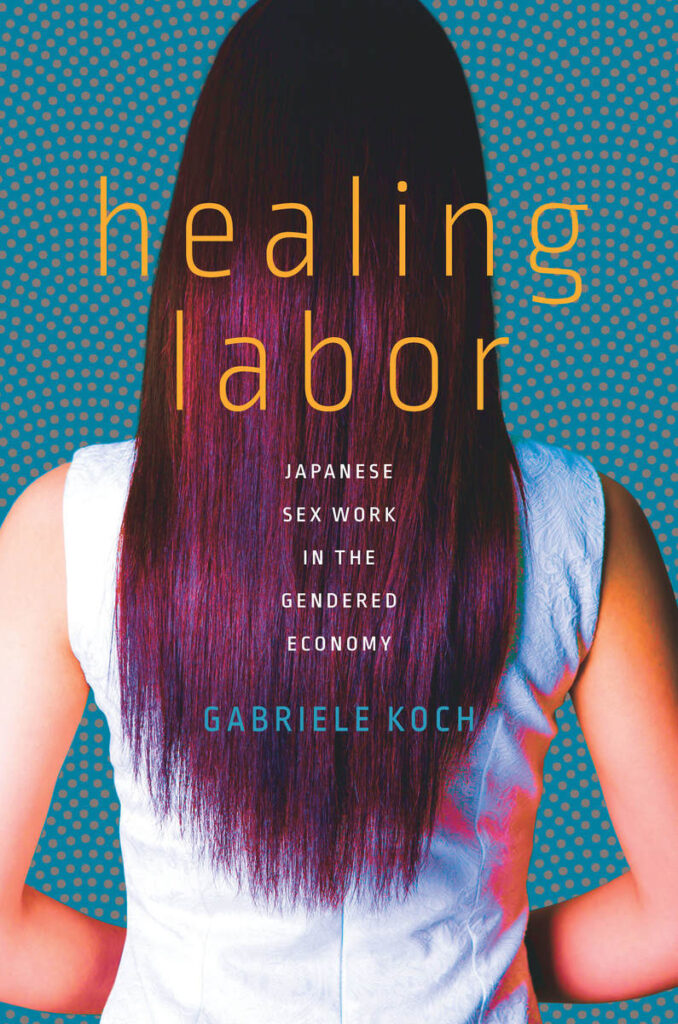
By Rashaad Jorden (Yamagata–ken, 2008-10; Kochi-ken, 2018-2020) for JQ magazine. A former head of JETAA Philadelphia’s Sub–Chapter, Rashaad is a graduate of Leeds Beckett University with a master’s degree in responsible tourism management. For more on his life abroad and enthusiasm for taiko drumming, visit his blog at www.gettingpounded.wordpress.com.
Modern Japan is a huge market for sex.
That statement probably isn’t surprising to those who have spent a night out in certain parts of Tokyo. But this is a reality for people who devote a lot of time to sex work.
Gabriele Koch tackles that statement and more in her examination of Japanese sex workers in Healing Labor: Japanese Sex Work in the Gendered Economy. Koch, an assistant professor of anthropology at Yale-NUS College, conducted 21 months of ethnographic fieldwork in Tokyo from 2008 to 2013 (she also gathered information from additional trips to the metropolis in 2016 and 2017). During her fieldwork, the author explored sites connected to the sex industry as well as diverse groups of people involved in it. Koch would seemingly have had plenty of opportunities to do so: according to research she cited in the book, roughly 22,000 legal sex industry businesses are in operation in Japan.
The information in Healing Labor (a term used to illustrate the view many sex workers have of the reparative aspects of their care since it’s ostensibly vital to any success in the male-gendered economy) is largely qualitative, so Koch doesn’t heavily rely on statistics. But she does use numbers to illustrate the risks for sex workers at Tokyo deriheru (an escort business in which a sex worker is sent to a hotel, rental room or private residence): mainly, in that instance, the relatively low condom use by male patrons.
Read MoreJETwit’s JET Alum Movers & Shakers: John McGee, Nagano and Kyoto (2004-2005, 2018-2019)
************
JETwit’s JET Alum Movers & Shakers is produced by Ryan Hata (Tottori-ken, 2014-2017), Margie Banin (Kochi-ken, 2005-2007), and Jim Walsh (Fukushima-ken, 2018-2020). Want to be featured next? Submit your information here.

John McGee, Nagano and Kyoto (2004-2005, 2018-2019)
Accomplishment:
Environmental Team connects you to nature through guided adventures, workshops, and speaking engagements.
More Information:
John is one of the rare two-time JET participants. In the gap, he created and managed Tampa Natsumatsuri and won the Foreign Minister’s Accomodation from Japan. Now he has started Environmental Team. His 20 year (and growing) career in Environmental Science and his intercultural experience allow him to draw from both cultures’ wildreness traditions and offer truly unique experiences in the US and Japan.
Public Information:
Email: Info@eteamsvc.com
Website: EteamSVC.com
Facebook: Facebook.com/eteamoutdoors
Instagram: Instagram.com/eteamsvc
Job: Japanese Market Development Manager – Udemy (San Francisco, CA, USA)
Position: Japanese Market Development Manager
Posted by: Udemy
Location: San Francisco, CA, USA
Contract: Full-Time
Thanks to JET alum, Mark Frey (Kumamoto-ken) for passing along the following job opening.
The Japanese Market Development Manager will be part of Udemy’s Business Development team and support market development and expansion in several key areas for the Japanese market.
We’re looking for a dynamic and experienced manager to drive and support efforts accelerating the growth and adoption of Udemy in Japan and establish Udemy as the leading online education marketplace where people would come to sharpen their skills to change their lives through learning. You will be involved in key aspects of the Japanese market: partnerships, operations and other areas as needed. We’ve experienced tremendous growth over the last few years and this role will be key to scaling our business development and operations moving forward.
JETwit’s JET Alum Movers & Shakers: Austin Gilkeson, Nagasaki-ken (2004-2006)
************
JETwit’s JET Alum Movers & Shakers is produced by Ryan Hata (Tottori-ken, 2014-2017), Margie Banin (Kochi-ken, 2005-2007), and Jim Walsh (Fukushima-ken, 2018-2020). Want to be featured next? Submit your information here.
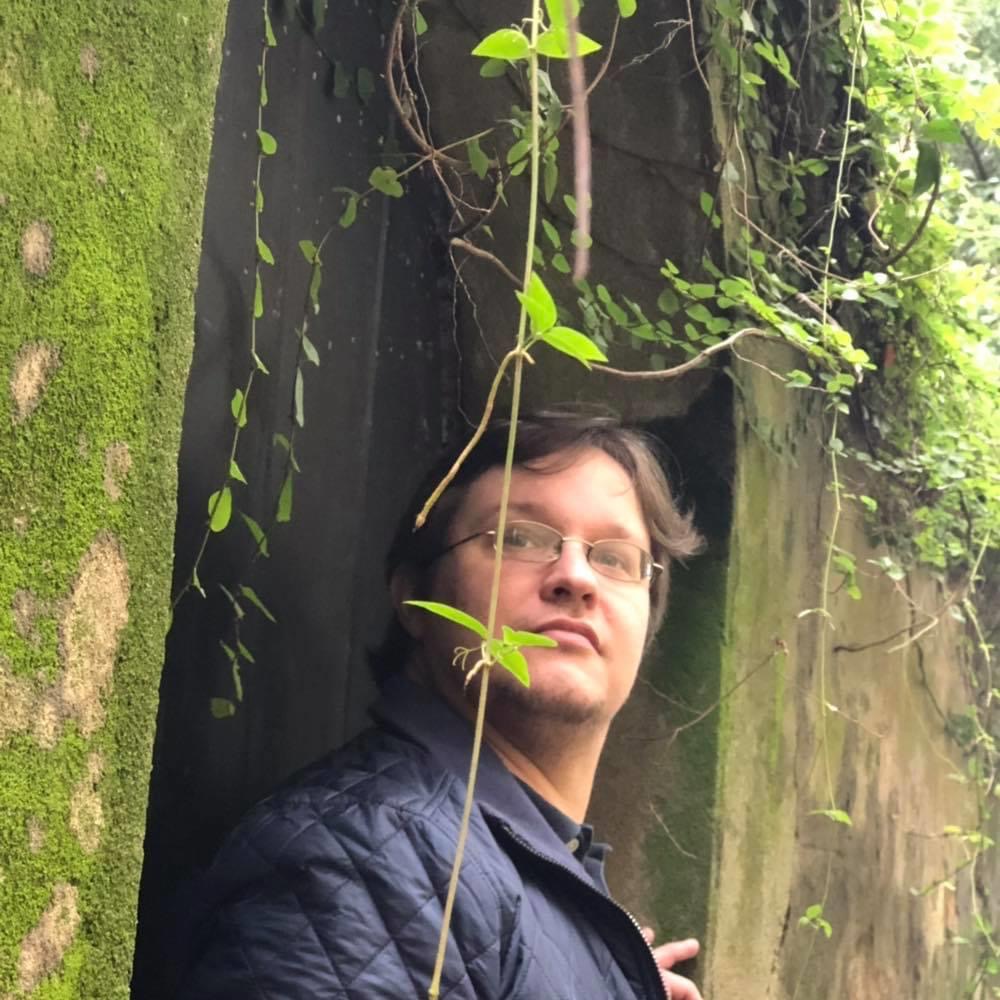
Austin Gilkeson, Nagasaki-ken (2004-2006)
Accomplishment:
A writer of humorous, personal, and critical essays published in “Foreign Policy,” “Tin House,” “McSweeney’s,” “Catapult,” “The Toast,” and other venues.
More Information:
After two years as an ALT on the island of Tsushima, Austin returned to Chicago and began working as the JET Program & MEXT Scholarships Coordinator at the Consulate-General of Japan in Chicago. In his free time, he writes essays and articles, most of which are either about, or in some way inspired by, his time as a JET. He currently lives with his wife and son just outside Chicago. Recently, he wrote about the video game “Ghost of Tsushima” and how it differs from the real island for “Foreign Policy” magazine (https://foreignpolicy.com/2020/08/20/the-half-real-world-of-ghost-of-tsushima/), and his chapter “On Tsushima” appears in Camphor Press’ anthology “Inaka: Portraits of Life in Rural Japan” (https://camphorpress.com/books/inaka-portraits-life-rural-japan/).
Public Information:
Website: https://austinhgilkeson.wordpress.com/publications/
Twitter: https://twitter.com/osutein
By Jack McDonough, 2021 prospective JET

Isla and Tsukasa
While checking JETwit recently, I noticed a post announcing a virtual roundtable asking: “why do we study anime and manga?” I was taken aback at first. I asked myself: “do people study anime and manga academically?” During my time in undergrad, I never heard of anyone studying anything other than the classics and a few select animated works: Maus by Art Spiegelman and Persepolis by Marjane Satrapi come to mind. My interest was piqued. I decided to sign up for the event; it started a mental journey.
The event was hosted by the Japan Foundation. The panelists were Dr. Christopher Bolton, Dr. Wendy Goldberg, Dr. N.C. Christopher Couch, and Dr. Frenchy Lunning. All of the panelists started the discussion by establishing their love of anime and manga while also speaking about their experiences either teaching or working in the industry. The experts explained that they arrived at manga and anime after exploring things like science fiction and American comics. The panel then considered the main question: “why study anime and manga?” This question necessitated a larger discussion on studying pop culture and mass media and the panelists found that the content of pop culture is a reflection of society at large: mass media has messages and the consumers of media are receiving those messages. Dr. Goldberg brought up the fact that the U.S. Army uses video games to recruit young people and Dr. Couch added that art is always created in social and economic conditions that are relevant to both the artist and viewer. After hearing the experts talk about how media is never simply media, I started to ask myself, “why do I enjoy certain anime and manga, and what are those things saying to me and about me?” Those questions are truly difficult to answer and yet fascinating to think about. Come with me on my mental journey, exploring an anime I recently watched and enjoyed.
Plastic Memories by Noataka Hayashi and Yoshiyuki Fujiwara is an anime that came out in 2015. The plot put simply, with spoilers: boy meets girl, girl is an android, girl has an expiration date, tragic love ensues. Set in the future, the protagonist Tsukasa joins Terminal Service One, which collects androids, called “giftias,” at the end of their lifespans. Tsukasa’s partner is the giftia Isla, who is nearing her expiration date . Plastic Memories lets you know upfront that there is no way to avoid the expiration of a giftia, all the while making you root for Tsukasa and Isla’s union. The power of the story is that you watch in both elation at the romance between the duo while dreading the fact that Isla’s time is only days, then hours, then minutes, then seconds away from being up.
So what is this story saying about the love between the two characters? Their love was worth it, even if it was only days long. What does my enjoyment of this anime say about me, and everyone else who shares that enjoyment? Even though I knew Tsukasa and Isla’s relationship was doomed, I believed that they should love each other and face the consequences rather than stay shut off from each other. I think this belief translates to real-world situations: it is better to try and experience than to play it safe. We all ascribe to this belief, in one form or another; otherwise, no one would get married or start a business, etc.
Alfred Tennyson wrote, “’Tis better to have loved and lost than never to have loved at all,” and while that sounds cliche, the creators of Plastic Memories took that idea and created an anime based on it. When I finished Plastic Memories, I couldn’t articulate why it was so powerful and why it resonated with me so much. I knew the outcome and yet I watched it anyway. I knew that Tsukasa was destined for heartbreak and Isla was going to die; yet I cheered on as they decided to be together, if only for a moment. Would I have ever thought this deeply about Plastic Memories without watching the aforementioned panel? Probably not, but going forward I will try to probe my mind immediately after consuming future anime and manga. I hope you do too; it’s much more fun that way.
For those that missed it, here is the link to the panel on YouTube: https://www.youtube.com/watch?v=PBO1BHyjyQ0

